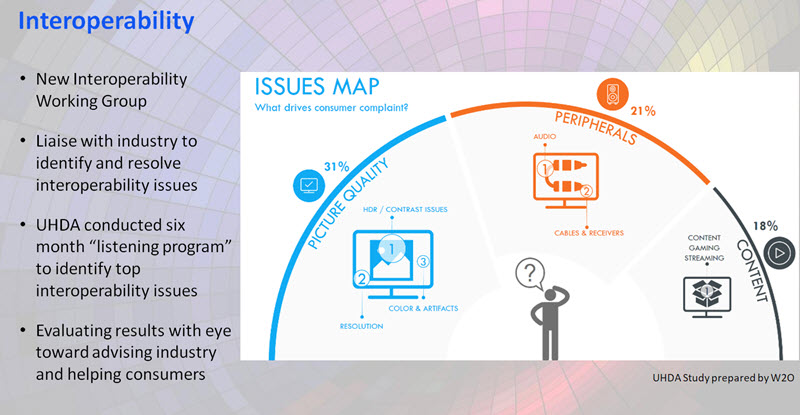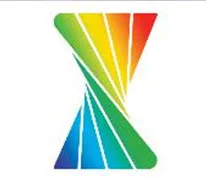We met with the UHD Alliance at the show – it had a meeting room that was in the Samsung area. The group now has 44 members and recently got a new Board of Directors. The market for UHD is forecast to grow solidly, but there is still a lack of knowledge about some aspects such as HDR.
The requirements for TVs have now been extended out to new devices monitors, PCs, STBs, streaming media players and of course, mobile devices. As usual, the UHDA was emphasising the end to end nature of its specifications. We discussed the frustration that there is no mechanism for consumers to know that they are really watching a full experience – as there is no handshaking or metadata between the display, driving box and content source. We also talked about how the Alliance had initially set its quality level requirements and we were told that more than 300 viewers of different ages had been tested to ensure that they could really tell the difference between certified and non-certified products.
The Alliance has done a lot of work to try to understand issues and frustrations that consumers have had in trying to ensure a premium experience and has analysed, for example, the posts in A/V forums, to identify where issues are being seen in interoperability of UltraHD and HDR. There are also regular plugfests being organised to test compatibility.
 The UHD Alliance has been working on this “Issues Map”
The UHD Alliance has been working on this “Issues Map”
The next phase of the programme is to develop a new website for consumers to help them to understand all the issues of getting a good experiience. There will also be educational videos and a new brochure that retailers can use. Getting retailers to understand and promote the Premium logo programme is seen as a critical part of the future.
The group continues to work on developing certification processes and partners.
Analyst Comment
We’d still like to see the UHDA setting a ‘stretch goal’ that might require better performance (especially 100% of P3 gamut) at a point in the future. The group said, however, that changing the requirements is likely to take some time.
We talked briefly about the possibility of adding HFR to the requirements for the logo, but there seems to be little pressure for this feature, yet.
Although there is no question that this kind of programme is both worthwhile and useful, it would be so much more powerful if there was a way of being absolutely certain of having a correctly set up system. Even if you have a TV or STB that is approved, it’s possible to have settings that do not support it. (BR)

